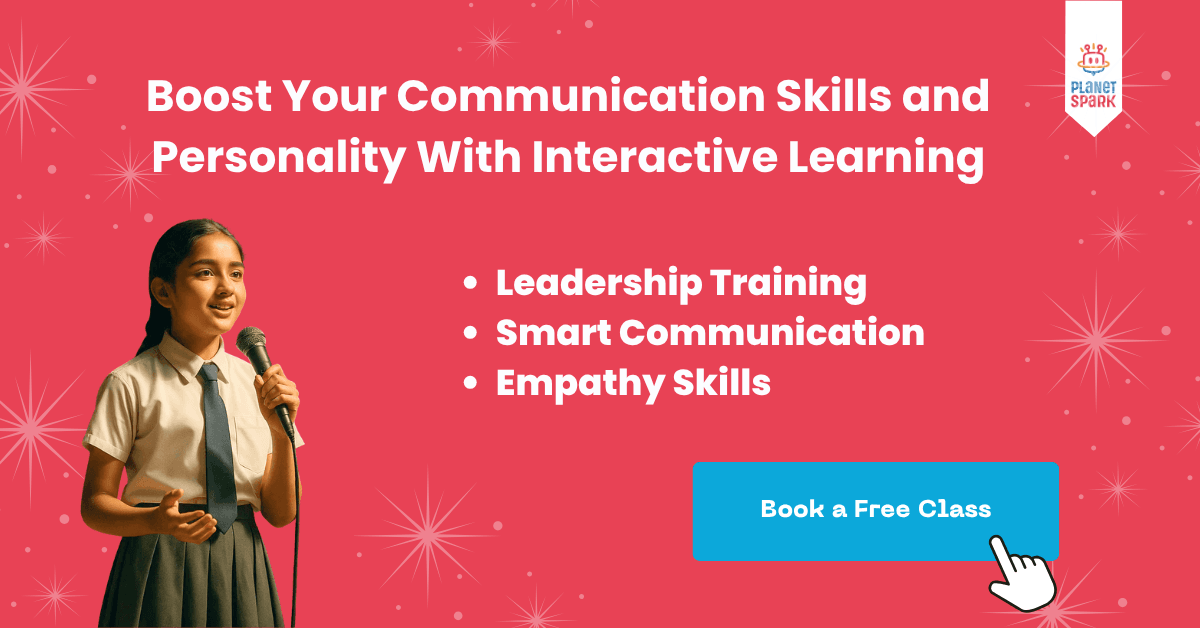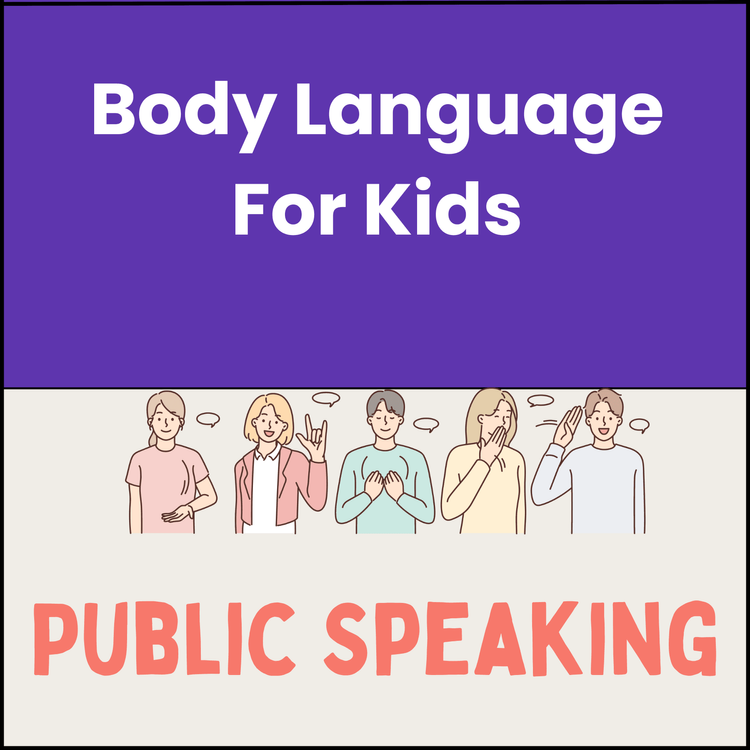Group Communication: Improve Communication Skills in Group Discussions

Table of Contents
- What is Group Communication?
- Types of Group Communication
- Key Elements of Effective Group Communication
- Why Communication Skills in Group Discussion Are Important
- Strategies to Improve Communication Skills in Group Discussi
- Common Challenges in Group Communication
- Tips for Leading a Group Discussion Effectively
- How PlanetSpark Helps Improve Group Communication Skills
- Conclusion
- Frequently Asked Questions (FAQs)
Group communication is the art of sharing ideas, listening, and collaborating effectively within a team or a group. Whether in classrooms, workplaces, or online meetings, the ability to communicate well in a group setting can make a big difference in achieving goals and building strong relationships.
Developing communication skills in group discussion helps you express your ideas clearly, listen actively, and contribute meaningfully. It boosts confidence, encourages teamwork, and ensures everyone’s voice is heard. Mastering this skill is essential for success in studies, professional life, and social interactions.
What is Group Communication?
Group communication refers to the process of exchanging information, ideas, and opinions among three or more people who share a common goal or purpose. It is more than just talking; it involves listening actively, understanding others’ perspectives, and responding appropriately.
In group communication, participants collaborate, brainstorm, solve problems, and make decisions together. It occurs in various settings, such as classrooms, workplaces, social clubs, online meetings, and team projects.
Book Your Free Demo Today
Experience how PlanetSpark helps learners master group communication skills.
Key Features of Group Communication:
Interaction Among Members: Every participant shares ideas and feedback.
Common Purpose: Groups communicate to achieve a shared goal, such as completing a project or solving a problem.
Active Participation: Each member has a role in the discussion, whether speaking, listening, or providing support.
Exchange of Information: Members share knowledge, suggestions, and insights to reach better outcomes.
Dynamic Process: Group communication involves continuous feedback, adjustments, and collaboration.
Effective group communication is essential for teamwork, learning, and decision-making. It helps build trust, encourages creativity, and ensures that everyone’s voice is considered.
Types of Group Communication
Group communication can take many forms, depending on the setting, purpose, and number of participants. Understanding the different types helps you adapt your communication skills in group discussion effectively.
1. Face-to-Face Discussions
This is the most common form of group communication, where members interact directly in person.
Example: A classroom group discussion where students share ideas on a project.
2. Team Meetings
These are structured discussions within organizations or groups to plan, review, or make decisions.
Example: A workplace team meeting to assign tasks and track progress.
3. Brainstorming Sessions
In these informal discussions, members generate creative ideas and solutions without immediate criticism or judgment.
Example: A group of designers brainstorming ideas for a new marketing campaign.
4. Online/Virtual Communication
With remote work and online learning, group discussions often happen via video calls, chat platforms, or collaboration tools.
Example: A Zoom group meeting where students collaborate on a virtual assignment.
5. Workshops and Seminars
These are guided group discussions led by a facilitator or instructor, often aimed at learning or problem-solving.
Example: A communication skills workshop where participants practice speaking and listening exercises in groups.
6. Collaborative Projects
Groups working together on long-term projects communicate regularly to plan, divide tasks, and solve challenges.
Example: Students working on a science project exchanging ideas and updates through group meetings and messages.
Understanding these types helps you adapt your approach, whether speaking, listening, or guiding discussions. Mastering communication skills in group discussion ensures your contributions are effective and valued.
Start Speaking Confidently in Groups
Schedule a demo class and improve your communication skills in group discussions.
Key Elements of Effective Group Communication
Effective group communication requires more than just speaking. It involves a combination of skills and behaviors that help the group collaborate, share ideas, and achieve goals. Developing strong communication skills in group discussion ensures every member contributes meaningfully.
Active Listening: Listening carefully to others is as important as expressing your own ideas. It helps you understand different perspectives, respond thoughtfully, and avoid misunderstandings.
Clear and Concise Speaking: Express your thoughts in a simple, organized manner. Avoid overcomplicating ideas so others can easily understand and engage with what you say.
Non-Verbal Communication: Body language, eye contact, facial expressions, and gestures play a big role in conveying confidence and interest. Positive non-verbal cues encourage collaboration.
Respect and Empathy: Acknowledge others’ opinions, even if they differ from yours. Showing empathy and respect helps maintain a healthy, supportive group environment.
Turn-Taking and Managing Interruptions: Effective group communication involves taking turns to speak and listening without interrupting. This ensures everyone has a chance to contribute.
Feedback and Clarification: Provide constructive feedback and ask questions to clarify points. This promotes understanding and prevents miscommunication.
By focusing on these elements, you can actively contribute to group discussions, encourage collaboration, and strengthen your overall communication skills.

Why Communication Skills in Group Discussion Are Important
Strong communication skills in a group setting are essential for expressing ideas clearly, understanding others, and achieving shared goals. Whether in classrooms, workplaces, or social settings, these skills make a significant difference in collaboration and personal growth.
- Express Ideas Clearly: Effective communication allows you to share your thoughts in a structured and understandable way. It ensures your ideas are heard and considered by the group.
- Build Confidence: Participating actively in group discussions boosts self-confidence. Speaking clearly and listening attentively helps overcome fear of public speaking or judgment.
- Enhance Teamwork and Collaboration: Good communicators foster cooperation. When everyone shares ideas and listens to others, teamwork improves, leading to better decision-making and problem-solving.
- Resolve Conflicts and Prevent Misunderstandings: Clear communication reduces confusion and minimizes conflicts. Addressing differences respectfully ensures that disagreements are resolved constructively.
- Encourage Critical Thinking: Active participation in discussions encourages evaluating ideas, asking questions, and offering solutions. This strengthens reasoning and analytical skills.
- Improve Personal and Professional Relationships: Being an effective communicator helps build trust and rapport. Strong communication skills in group discussions make you a valuable member of any team.
Mastering these skills not only helps you contribute effectively in discussions but also prepares you for leadership roles and collaborative environments.
Try a Live Class for Free!
Participate in a demo session and learn to express your ideas clearly in a group.
Strategies to Improve Communication Skills in Group Discussion
Improving your communication skills in group discussions takes practice, preparation, and awareness. Here are actionable strategies to help you contribute effectively and confidently:
1. Prepare in Advance: Research the topic and organize your thoughts before the discussion. Having a clear understanding helps you present your ideas confidently and accurately.
2. Practice Active Listening: Focus on what others are saying without interrupting. Acknowledge their points and respond thoughtfully to show that you value their input.
3. Speak Clearly and Confidently: Use simple, concise language to express your ideas. Maintain a confident tone, and avoid speaking too fast or too quietly.
4. Ask Relevant Questions: Engage others by asking questions that clarify points or encourage deeper discussion. This shows interest and promotes collaboration.
5. Give Constructive Feedback: Offer helpful suggestions and positive comments rather than criticism. This encourages a supportive environment and better team interactions.
6. Observe Non-Verbal Cues: Pay attention to body language, facial expressions, and gestures. Positive non-verbal communication reinforces your spoken words and helps you understand others better.
7. Encourage Participation from Others: If some members are quiet, invite them to share their thoughts. Balanced participation makes discussions more productive and inclusive.
8. Stay Focused and Respectful: Stick to the topic and respect different opinions. Avoid dominating the conversation or getting distracted, as it can disrupt the flow of discussion.
By practicing these strategies, you can strengthen your communication skills in group discussion, contribute meaningfully, and build confidence in collaborative environments.
Common Challenges in Group Communication
Group discussions and collaborative communication are not always easy. Understanding common challenges and learning how to address them can improve your effectiveness in any group setting.
1. Dominating Speakers
Some members may talk too much, preventing others from sharing their ideas.
Solution: Politely wait for your turn, or the group leader can set ground rules to ensure everyone participates.
2. Misunderstandings or Misinterpretations
Different perspectives or unclear statements can lead to confusion.
Solution: Ask clarifying questions and summarize points to ensure everyone understands correctly.
3. Fear of Speaking in a Group
Many people hesitate to speak due to shyness or fear of judgment.
Solution: Start with small contributions, practice beforehand, and focus on expressing ideas clearly.
4. Conflicts or Disagreements
Disagreements can escalate if not managed well.
Solution: Stay calm, listen actively, acknowledge others’ opinions, and focus on finding a constructive solution.
5. Lack of Attention or Engagement
Some members may be distracted or not participate actively.
Solution: Encourage interactive discussions, ask engaging questions, and make the topic relevant to all participants.
6. Poor Non-Verbal Communication
Negative body language or lack of eye contact can hinder communication.
Solution: Maintain open body language, make eye contact, and use gestures to support your words.
By being aware of these challenges and applying practical solutions, you can make group communication more productive, respectful, and engaging for everyone involved.
Tips for Leading a Group Discussion Effectively
Leading a group discussion requires preparation, focus, and the ability to guide participants while encouraging active participation. Strong leadership ensures the discussion is productive and inclusive.
1. Set Clear Objectives
Begin by explaining the purpose of the discussion. This helps participants stay focused and ensures the conversation is productive.
2. Establish Ground Rules
Encourage respect, turn-taking, and active listening. Setting simple rules prevents interruptions and keeps the discussion organized.
3. Keep the Discussion Focused
Guide participants to stay on topic and avoid irrelevant tangents. Summarize key points regularly to maintain clarity.
4. Encourage Balanced Participation
Invite quieter members to share their opinions and manage dominant speakers tactfully. Balanced participation ensures diverse perspectives are heard.
5. Manage Conflicts Constructively
Address disagreements calmly and encourage participants to express their views respectfully. Focus on solutions rather than personal differences.
6. Use Questions Strategically
Ask open-ended questions to stimulate discussion and critical thinking. Clarifying questions can help resolve misunderstandings.
7. Summarize and Conclude
At the end of the discussion, summarize the main points and highlight any conclusions or action items. This reinforces understanding and ensures everyone leaves with clarity.
By following these tips, you can lead group discussions that are organized, engaging, and productive, while also helping participants improve their communication skills in group discussion.

How PlanetSpark Helps Improve Group Communication Skills
While reading and practice are important, real improvement in group communication comes from interactive learning. PlanetSpark offers engaging online classes that help learners develop communication skills in group discussion through practical activities.
What Learners Gain:
Interactive Group Activities: Participate in structured discussions, debates, and collaborative projects to practice speaking and listening.
Personalized Feedback: Educators provide guidance on clarity, confidence, and effective participation in group settings.
Confidence Building: Regular practice in a supportive environment helps learners overcome fear of speaking and express ideas clearly.
Real-Life Application: Techniques learned in class can be applied in school, college, or workplace discussions.
By combining theory with practice, PlanetSpark ensures learners not only understand the principles of group communication but also apply them confidently in real situations.
Conclusion
Group communication is a vital skill that enables collaboration, understanding, and effective decision-making. Developing strong communication skills in group discussion helps you express ideas clearly, listen actively, and contribute meaningfully to any team or group setting.
By practicing active listening, speaking confidently, and respecting diverse perspectives, you can participate effectively in discussions and build stronger personal and professional relationships. Consistent practice, preparation, and guidance from interactive learning platforms like PlanetSpark make mastering group communication achievable and enjoyable.
Frequently Asked Questions (FAQs)
1. What is group communication?
Group communication is the process of sharing ideas, information, and opinions among three or more people who work together to achieve a common goal.
2. Why are communication skills in group discussion important?
They help you express your ideas clearly, listen to others, participate confidently, and collaborate effectively with the team.
3. How can I overcome fear of speaking in a group?
Start by preparing in advance, contributing small points, practicing active listening, and gradually increasing your participation.
4. How can I contribute effectively to a group discussion?
Speak clearly and concisely, listen actively, ask relevant questions, provide constructive feedback, and encourage balanced participation.
5. Can kids develop group communication skills online?
Yes. Interactive online classes provide a safe and engaging environment for children to practice speaking, listening, and collaborating in group discussions.
Download Free Worksheets
Personalized Communication Report
Record a video to get a AI generated personalized communication report for your child

Hi There, want to try these
tips for your child with
LIVE with our expert coach?
Let's check your child's
English fluency

